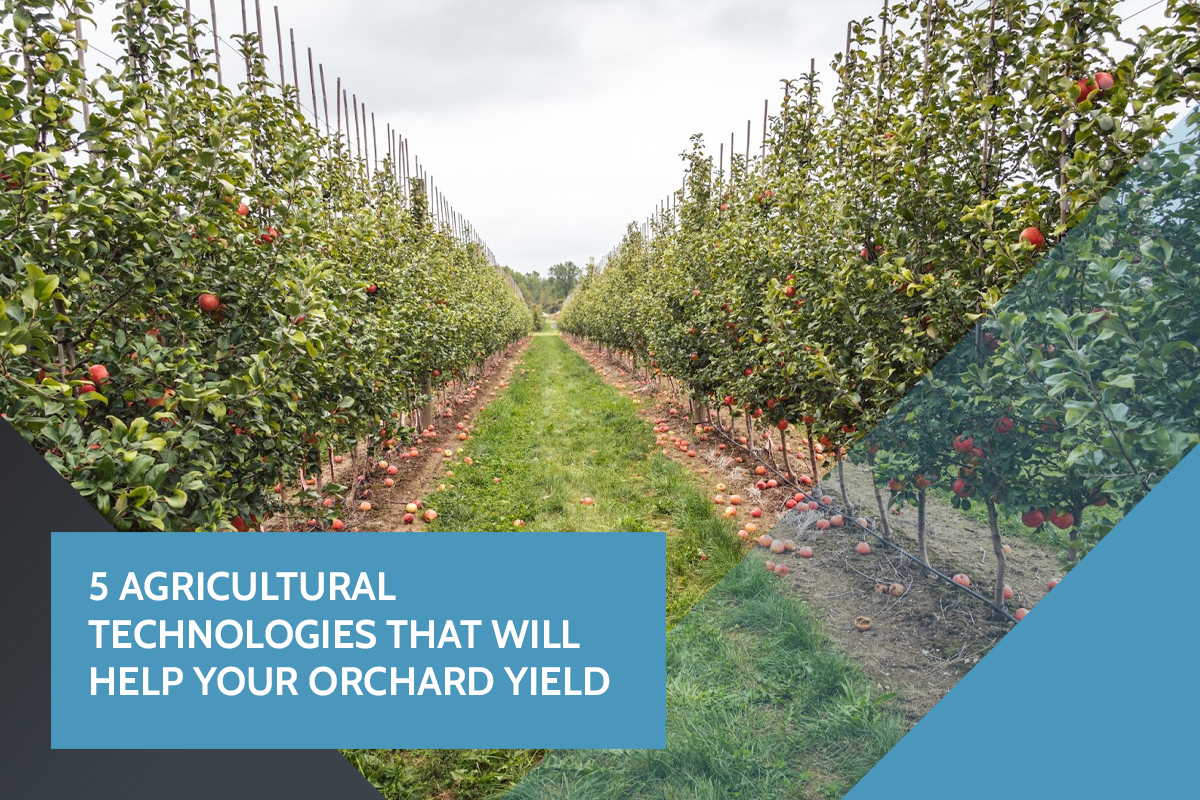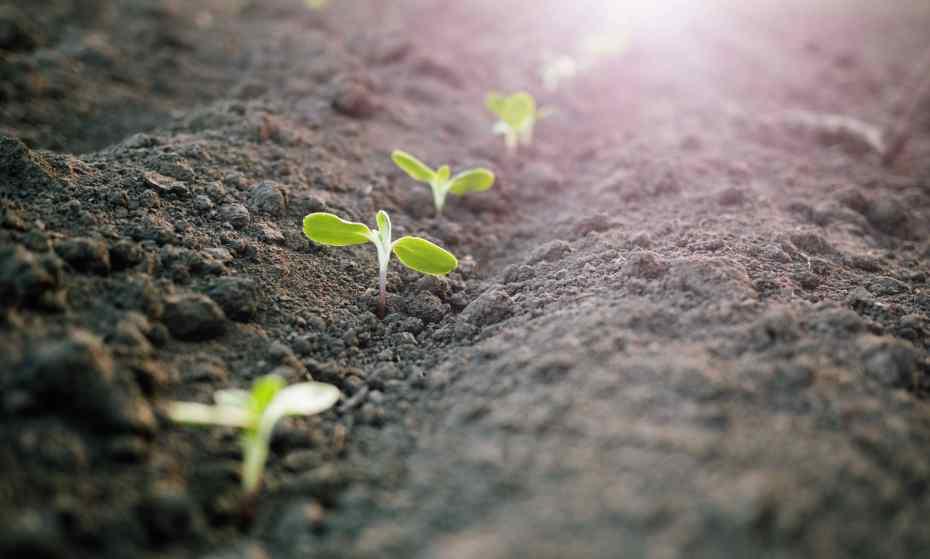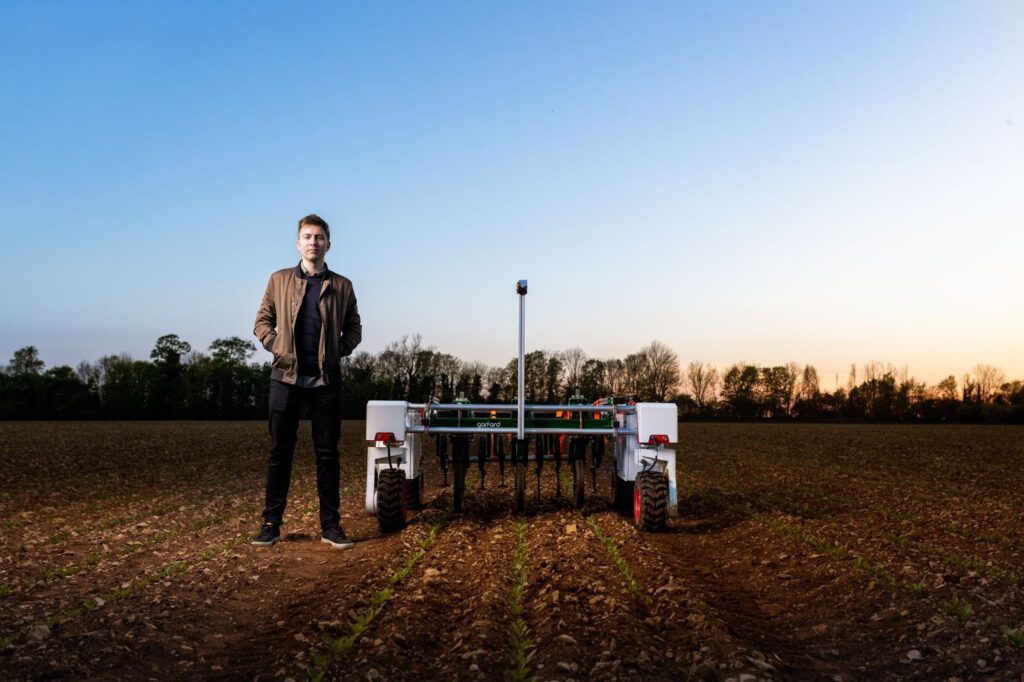5 Agricultural Technologies That Will Help Your Orchard Yield

Orchard owners here in California are continuously looking for ways to increase yields. With orchard supplies regularly flying off the shelves every season, the need for better orchard yields has been more pressing than ever. Agricultural technology has been vital in helping orchard owners meet this demand.
Every area of agriculture, from the type of fruit growing supplies available to weather manipulation, seed selection, and the ground that seed goes into, is geared toward better yields. Improved technologies that increase fruit growing supply are increasingly driving efforts by orchard owners to get higher yields.
Here are five agricultural technologies used by orchard owners that you should know:
Cloud Computers for Higher Orchard Yields
Fruit growers around the world have been practicing some form of weather manipulation since we became farmers. The simplest form of this practice is irrigation-watering without rain. With technological advances in orchard farming over the years, growers are embracing solutions like cloud computing, which has brought us into another era of more precise, beneficial irrigation.
Cloud technology plays a central role in this new technological irrigation. Nowadays, orchards with cloud technology use simple hoses with holes punched in them. These hoses or drip lines get filled with water from pumps.
Strategically placed, precise sensors measure the presence of water or lack of it. They receive messages from a cloud-based computer. When moisture reaches a critical low, these sensors signal the pumps to send water through the drip hoses.
Water drips where it is needed and when it is needed. No one has to drive a water truck through the orchard or drag hoses around. The savings of time and labor are obvious. This is one of the most popular agricultural technologies used by orchard owners.
Orchard Seed Technology

Many do not realize that seeds make up over half of the foods we consume. If you stop to think about it, seeds are indirectly consumed when we eat the animals which eat seeds. Seed quality has always been one of the major factors for fruit yields. Poor seed quality dramatically lowers yields. Focusing on improved seed quality can improve yields dramatically. Better seed quality also results in better-tasting fruit.
Seed coating is a technology advancement that helps protect the seed. An unprotected seed may not sprout as it should. New testing methods have increased the ability to detect contaminants found in seeds. Additionally, advanced agricultural technologies used by orchard owners like cryopreservation, a freezing method, help preserve seed genetics. These older plant seeds contribute to superior seed development.
Another thing that is worked on is seed viability, which is carefully researched and recorded. Germination rates are studied closely to help weed out inferior seeds. The seeds that sprout are obviously the keepers, and they’re analyzed further to determine the desired qualities of the best, most productive seeds.
A nano is equal to one billionth of a meter. This is atom-size, yet such an infinitesimal particle can make huge improvements in seed and fruit production. They improve sprout rates and speed seedling growth. These nanoparticle-infused seed varieties also have pesticides and fungicides built in with managed or triggered release. These enhanced seeds also enhance fruit flavors. Such agricultural technologies used by orchard owners impact overall yield.
Orchard Planting Technology
One of the more interesting new technological advances in orchard farming is the use of electronic sensors. These high-resolution sensors can evaluate soil quality based on available nutrients detected in the soil. Instead of fertilizing an entire field equally, now the farmer knows which areas need the most fertilizer and which areas need the least. This represents serious savings on fertilizer waste and costs. This decreases fertilizer costs and gives a more even, fuller crop yield from the fruit trees.
These high-resolution sensors can be mounted on fruit tree equipment or attached to drones, which are one of the agricultural technologies used by orchard owners to streamline operations. Drones also hold great potential since they afford the orchard farmer a view not available in the past. These drones can fly over and quickly scan an orchard. The farmer can see a complete image of the entire orchard and use sensors to detect areas that need more nutrients for better fruit production.
Growth Technology
Technology is also taking on more of a lead role in the actual orchard growth cycle. Automated sprayers, farmhouse data sensors, smartphones, and tablets are the preferred orchard management methods for technology-based farming. This management method increases precision and cuts fertilizer, labor, and water waste. Such agricultural technologies used by orchard owners also result in a more plenteous fruit harvest.
Have you heard about fungus fertilizer? A new patented process for fertilizing with fungus has been developed. Plants that are exposed to this microorganism produce higher-quality and quantities of seeds for fruit tree orchards. The name for this microorganism is Colletotrichum Tofieldiae. So far, it has proved to be superior to traditional, mineral-based fertilizers. Colletotrichum fungi are not new agricultural knowledge.
They have long been known for how they damage crops, but this subspecies is actually healthy for seeds and plants. Indoor orchards? This is an ideal solution for dramatically increasing orchard yields. This is one of the agricultural technologies used by orchard owners today to eliminate the biggest danger to crop growth and yields—weather. Indoor crop technology using LED growth lighting is limited in scope to hobbyists for now.
Orchard Harvesting Technology
Technological advances in orchard harvesting can also boost orchard yield by reducing damaged fruit. Rough handling by workers damages the product. Automated machinery and robots can reduce this damage. Harvest machines are now taking on a more central role for orchards. Since around 2010, these machines have been showing up on show floors of horticulture fairs. Improvements are also in the works for these machines.
Here are a few examples of such harvesting technologies in orchards:
- Grape harvesters are one-man operated, and they do a much quicker and more thorough job of picking the fruit without all the laborers of years past. They feature built-in sorters that shed the leaves and funnel the fruit into containers. The driver controls the whole operation from an air-conditioned cab of the harvester. They dump the picked grapes into a holding bin waiting at the end of the row. Automated agricultural technologies used by orchard owners help save thousands of dollars in labor costs each year.
- Lemon harvesters are equally impressive labor and time savers. These harvesters enter the lemon grove with huge, manned buckets similar to a utility repair truck. Pickers on each side of the truck gather the fruit into containers as the truck ambles along between the rows of fruit. They then load the full bags of fruit onto the conveyor that dumps them into the huge baskets for transportation.
- The olive harvester is similar to the grape harvester. It’s accompanied by a tractor with a trailer that receives the fruit from the picker and dumps it into a holding bin.
- Orange tree harvesters use low-slung platforms and attached metal prongs to shake the tree into releasing its fruit onto a conveyor that dumps it into receiving bins that accompany the picker. This picker is an attachable machine that hooks onto a regular tractor.
All these are examples of impressive agricultural technologies used by orchard owners. Even with the latest technology improvements, they still use people and tractors. This has been pretty much run-of-the-mill in fruit agriculture harvesting for decades.
New-Generation Technological Advances

The new-generation technological advances in orchard farming that we’re not seeing today are very different from what growers are used to in their operations. A perfect example is agribots or robotic pickers that communicate with drones and satellites or the use of automated tractors. How about an apple-picking robot with a vacuum? Agricultural technologies like these used by orchard owners drastically reduce manual labor costs for harvesting.
The only workers needed are the robot operators. Today, you can find robots that do everything from herding cattle to pruning orchard trees. For instance, the Prospera Bot detects dying plants before orchard owners know they are dying. Using cameras and sensors which continually scan orchards, this robot warns farmers before invaders have time to ruin whole swaths of orchards.
The technological advancements available today are amazing. The improvements in these concepts are even more so. The combination of robots, computers, and satellites promises ever-increasing fruit yields. Orchard farmers willing to incorporate these developing technological advances into their operations stand to profit handsomely.


